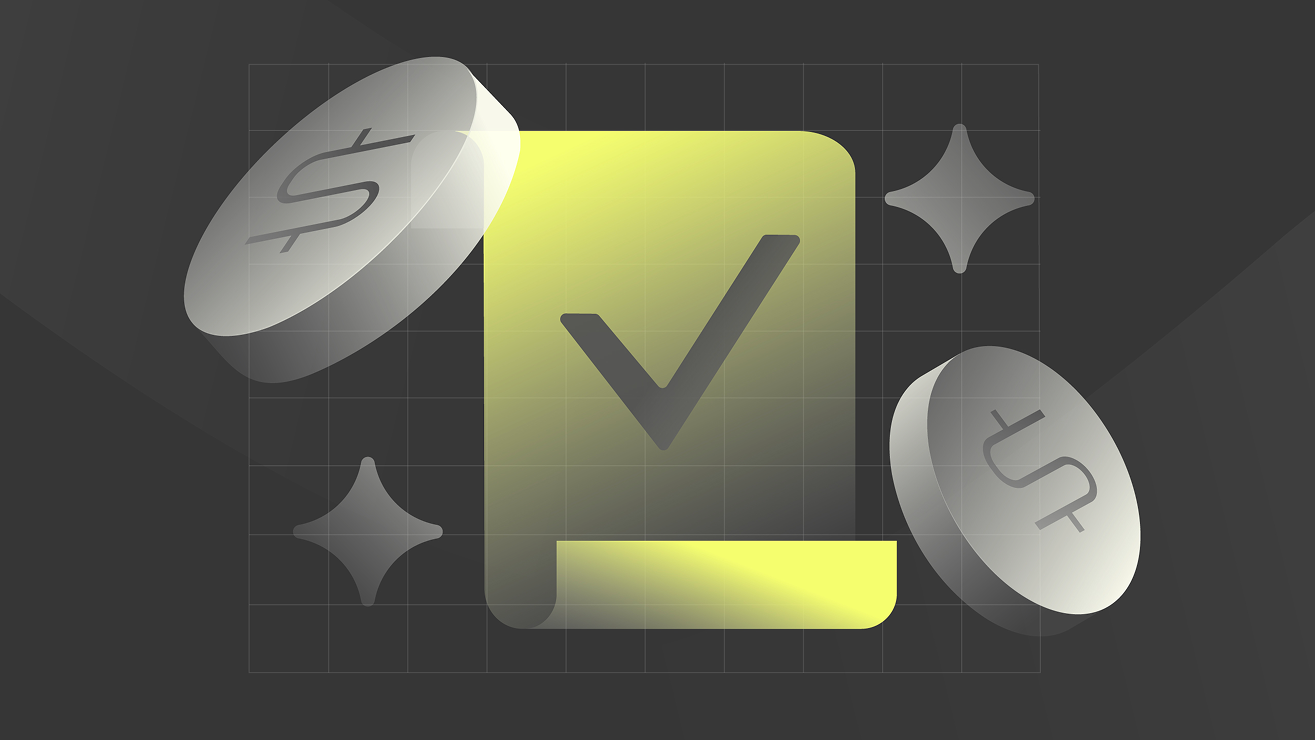
Accounts receivable stands as a pivotal determinant of liquidity and strategic maneuverability in the financial ecosystem of any prominent enterprise. Yet, the traditional stewardship of accounts receivable frequently involves convoluted, human-intensive processes, laden with data transcription, reconciliation complexities, and the persistent challenge of tardy remittances. This intricate financial choreography, vital for sustaining fiscal robustness, inherently demands astute oversight. It is precisely within this domain that AI in accounts receivable emerges as a truly revolutionary force. For leaders in accounting, finance, and technology, grasping AI’s transformative capacity in AR is indispensable for propelling cash flow optimization and ensuring unparalleled operational efficiency.
This exposition aims to elucidate the pivotal concept of AI in accounts receivable. It will precisely delineate AI’s groundbreaking role within AR, articulate how it autonomously streamlines routine tasks, sharply curtails errors, provides profound insights into customer payment behaviors, and markedly enhances overall cash flow management. By meticulously detailing the core AI technologies deployed in AR, the compelling advantages of integrating artificial intelligence into AR workflows, addressing typical implementation hurdles, and offering a strategic blueprint for successful AI adoption, this content provides a comprehensive guide for enterprises seeking to leverage AI in accounts receivable. In essence, it serves as an indispensable resource for deciphering and implementing AI-driven solutions to optimize accounts receivable functions.
Decoding Accounts Receivable
Accounts receivable (AR) represents the aggregate sum of money legally owed to a company by its clientele for goods or services already delivered but for which payment has not yet been fully remitted. This outstanding claim on funds typically resides as a current asset on an organization’s balance sheet. The diligent and proactive management of accounts receivable matters profoundly impacts an organization’s immediate liquidity, overall cash flow dynamics, and enduring financial vitality. Consequently, ensuring swift and efficient collection processes is a paramount concern for any enterprise committed to sustainable growth.
Traditionally, AR departments grapple with a recurring cycle of tasks: comprehensive invoice generation and distribution, intricate payment reconciliation, handling diverse customer queries, persistently pursuing overdue payments (a process known as dunning), and the complex navigation of dispute resolution. These operational sequences are often highly repetitive, characterized by substantial volume, and inherently susceptible to human error, directly influencing the velocity and accuracy of incoming cash.
The Transformative Power of AI in Accounts Receivable
The strategic integration of artificial intelligence into Accounts Receivable operations marks a fundamental paradigm shift, elevating the function beyond mere digitization to intelligent, cognitive automation. AI in Accounts Receivable transcends simply automating individual steps; it infuses cognitive capabilities across the entire AR lifecycle, empowering systems to learn, anticipate, and adapt dynamically. This fundamentally reshapes how businesses manage their incoming cash, rendering accounts receivable matters far more efficient, insightful, and strategically impactful.
Here’s how AI in Accounts Receivable fundamentally revolutionizes operations:
- Accelerated Cash Application: AI autonomously matches incoming payments to the correct outstanding invoices, even when confronting partial remittances, deductions, or fragmented information. This capability drastically accelerates the cash application process, expediting access to funds.
- Predictive Payment Foresight: AI rigorously analyzes historical payment data, granular customer behavior patterns, and broader external economic indicators to forecast when specific customers are most likely to remit payment. This enables the proactive deployment of highly targeted collection strategies.
- Intelligent Dunning and Collections: AI refines dunning strategies by personalizing communication channels (e.g., email, SMS), tailoring messaging based on individual payment history and customer segmentation, and autonomously scheduling optimal follow-up communications.
- Automated Dispute Resolution: AI meticulously analyzes invoice discrepancies, cross-references associated purchase orders or service agreements, and can even propose optimal resolutions or automatically route complex disputes to the appropriate human agent with full contextual awareness.
- Enhanced Fraud Detection: AI algorithms possess the capacity to identify unusual payment patterns or suspicious transactional activities that might indicate fraudulent behavior, thereby significantly bolstering financial security.
- Improved Reporting and Forward-looking Forecasting: AI provides real-time, highly accurate data for precise cash flow forecasting, comprehensive financial reporting, and agile strategic decision-making, offering deeper, actionable insights into accounts receivable matters.
These transformative capabilities unequivocally demonstrate why artificial intelligence in accounts receivable has become an indispensable component for modern financial leadership.
Key AI Technologies Propelling AR Transformation
The formidable power of AI in Accounts Receivable is underpinned by several sophisticated artificial intelligence technologies operating in seamless synergy. These distinct AI in AR features redefine what is achievable in efficiency and control.
- Machine Learning (ML): ML algorithms form the core of predictive analytics in AR. They rigorously learn from vast historical payment data to forecast future payment behavior, pinpoint at-risk accounts, and dynamically optimize collection strategies, ensuring a proactive approach to accounts receivable.
- Natural Language Processing (NLP): NLP empowers AI systems to comprehend unstructured data embedded within customer emails, conversational interactions, and dispute narratives. This capability enables automated analysis of customer queries and the generation of personalized responses, greatly enhancing customer interactions.
- Optical Character Recognition (OCR) & Intelligent Document Processing (IDP): Beyond rudimentary OCR, IDP leverages AI to meticulously extract structured data from diverse invoice formats, payment remittances, and other critical financial documents, irrespective of their specific layout. This significantly curtails manual data entry within the accounts receivable cycle.
- Robotic Process Automation (RPA) (AI-Enhanced): While traditional RPA excels at handling repetitive tasks, its synergistic combination with AI enables it to execute more intelligent actions, such as navigating disparate systems to retrieve data for reconciliation or initiating automated dunning sequences based on learned patterns.
- Generative AI: Emerging AI in Accounts Receivable solutions are harnessing Generative AI to autonomously draft personalized dunning emails, succinctly summarize dispute complexities for human review, or generate bespoke financial reports, thereby dramatically accelerating communication and analytical processes.
These expertly combined AI in AR features culminate in a robust and intelligent AI accounts receivable solution.
Illuminating AI in Accounts Receivable Examples
The profound transformative impact of AI in Accounts Receivable is vividly brought to life through real-world applications spanning various critical stages of the AR lifecycle.
- Automated Invoice Matching and Cash Application: This stands as a quintessential AI in Accounts Receivable example. AI autonomously executes the intricate task of matching incoming payments to outstanding invoices, even deftly handling partial payments, complex deductions, or fragmented information. This capability drastically curtails manual cash application efforts and accelerates cash application.
- Predictive Collections and Optimized Dunning: Rather than generic, one-size-fits-all reminder emails, AI rigorously analyzes granular payment history, individual customer credit profiles, and dynamic communication preferences to predict the precise likelihood of delayed payment. It then autonomously deploys personalized dunning strategies—determining the optimal timing, communication channel (e.g., email, phone call, SMS), and conversational tone to maximize collection success. This ensures accounts receivable matters are handled with strategic foresight.
- Streamlined Dispute Resolution: AI possesses the capacity to meticulously analyze the content of customer disputes (gleaned from emails, customer portals, or call transcripts), extract core reasons for contention, cross-reference these against sales orders or service contracts, and even suggest appropriate resolutions. For highly complex cases, it can autonomously compile all relevant documentation and route the dispute to the appropriate human team member with full context, significantly accelerating resolution times.
- Automated Account Reconciliation: For large enterprises, the reconciliation of numerous customer accounts can represent a monumental undertaking. AI accounts receivable systems possess the capability to automatically compare various disparate data sources (e.g., customer ledgers, bank statements, invoice systems) to precisely identify discrepancies and autonomously propose reconciliation entries, thereby substantially reducing manual effort during critical financial closing periods.
- Dynamic Credit Risk Assessment: AI can rigorously analyze a significantly broader spectrum of data points (extending beyond conventional credit scores), encompassing detailed payment history, prevailing industry trends, and even public sentiment data, to furnish more dynamic and remarkably accurate credit risk assessments for both new and existing customers. This critically helps minimize future bad debt within accounts receivable.
These diverse AI in Accounts Receivable examples unequivocally demonstrate how AI elevates AR from a reactive function to a proactively intelligent and strategic one.
Implementing AI in Accounts Receivable
While the transformative benefits of AI in Accounts Receivable are compelling, successful implementation necessitates careful navigation of potential challenges and adherence to a clear roadmap.
- Data Quality and Integration: AI systems thrive on impeccable, meticulously integrated data. Challenges frequently arise from fragmented data residing in siloed systems, inconsistent data formats, and inherent poor data quality. A robust data governance strategy is therefore paramount.
- Legacy System Interoperability: Many large enterprises operate with entrenched, complex legacy systems that can present significant hurdles for seamless integration with new AI solutions.
- Change Management: The adoption of AI inherently transforms existing roles. Resistance from employees accustomed to manual processes or apprehension regarding job displacement can impede successful adoption. Effective, proactive change management is crucial.
- Skill Gaps: Implementing, configuring, and effectively managing sophisticated AI solutions may necessitate the cultivation of new skill sets within data science, AI governance, and advanced analytics.
A strategic roadmap for successful AI in Accounts Receivable adoption typically includes:
- Meticulous Current State Assessment: Thoroughly map existing accounts receivable processes to precisely identify bottlenecks, inefficiencies, and key pain points.
- Quantifiable Objective Definition: Establish clear, measurable goals for your AI in Accounts Receivable initiatives (e.g., a X% reduction in Days Sales Outstanding – DSO, a Y% increase in cash application accuracy).
- Strategic Platform Selection: Choose an Accounts Receivable Automation Software that perfectly aligns with your organization’s specific operational needs, seamlessly integrates with existing infrastructure, and robustly supports your long-term automation vision. Prioritize platforms like Kognitos that offer AI-driven, natural language capabilities for maximum flexibility and business empowerment.
- Phased Deployment Approach: Initiate with a pilot project focusing on a high-impact, achievable AI accounts receivable task to demonstrate early successes and cultivate internal momentum before scaling enterprise-wide.
- Robust Data Strategy: Invest diligently in data cleansing initiatives, standardization protocols, and integration projects to guarantee that your AI has access to reliable, high-quality information.
- Comprehensive Rollout & Training: Implement the solution gradually, furnishing exhaustive training and ongoing support to AR teams, emphasizing how AI strategically augments their existing capabilities.
- Commitment to Continuous Optimization: AI in Accounts Receivable is never a static endpoint. Continuously monitor performance metrics, rigorously analyze insights gleaned from operational data, and relentlessly refine AI models and underlying processes for sustained efficiency gains and perpetual improvement.
Revolutionizing Accounts Receivable with Intelligent Automation with Kognitos
While numerous Accounts Receivable Automation Software solutions offer some degree of automation, Kognitos delivers a fundamentally distinct and profoundly more powerful approach. It is specifically engineered for the complex, nuanced, and frequently exception-laden workflows inherent in accounts receivable for large enterprises. The platform delivers natural language process automation, rendering it exceptionally proficient in revolutionizing AI in Accounts Receivable.
Kognitos empowers sophisticated AI in Accounts Receivable by:
- Deciphering Natural Language Intent: AR teams, possessing an innate understanding of customer communications and financial reconciliation intricacies, can directly define and modify workflows using plain English. Kognitos’s sophisticated AI reasoning engine interprets this human intent with unparalleled precision, translating it into executable automation, thereby entirely liberating users from complex programming. This makes managing accounts receivable matters truly intuitive.
- Exception Handling: The AR world is replete with unpredictable scenarios: partial payments, unauthorized deductions, or highly complex dispute reasons. Kognitos’s AI reasoning can intelligently detect, diagnose, and resolve unforeseen exceptions, dynamically adapt to variations, and even seamlessly integrate human-in-the-loop for crucial approvals or nuanced judgments. This ensures remarkably resilient AI accounts receivable automation, even in the most challenging scenarios.
- Automated Cash Application with Unparalleled Precision: Kognitos employs its advanced AI to automate the matching of incoming payments to invoices with industry-leading accuracy, even when confronted with messy data or intricate deductions. This capability directly impacts cash flow acceleration, as demonstrated across countless AI in Accounts Receivable examples.
- Proactive Collection Orchestration: Kognitos possesses the capability to automate sophisticated dunning workflows, personalizing communications and optimizing timing based on AI-driven payment predictions. It can autonomously dispatch reminders, flag high-risk accounts, and automatically escalate to human collectors only when necessary, thereby optimizing overall accounts receivable efforts.
- Enterprise-Grade, Purpose-Built AI: Kognitos provides an exceptionally robust, secure, and highly scalable artificial intelligence solution specifically engineered for demanding enterprise process automation. It stands apart from generalized AI tools, being meticulously purpose-built for the rigor, data security, and stringent compliance required by large organizations handling sensitive financial data. Its AI in AR features are expressly designed for enterprise scale and reliability.
By leveraging Kognitos, organizations can transcend traditional AI accounts receivable approaches, ascending to a realm of truly intelligent, remarkably adaptive, and profoundly human-centric AR management. This bestows unparalleled efficiency, measurably accelerates cash flow, and cultivates formidable financial oversight.
AI in Accounts Receivable and the Future
The trajectory of AI in Accounts Receivable is unequivocally towards even greater intelligence, autonomy, and sophisticated predictive capabilities. The future of accounts receivable management will be fundamentally characterized by:
- Fully Autonomous Cash Application: AI will assume responsibility for virtually all facets of cash application, from the seamless receipt of payment data to final reconciliation, with minimal human intervention.
- Hyper-Personalized Collections: AI will deliver exquisitely individualized collection strategies, precisely optimizing communication channels, tone, and timing for each customer based on their unique payment history and behavioral patterns.
- Predictive Dispute Prevention and Resolution: AI will anticipate potential disputes before they even arise, proactively suggesting actions to avert them, or autonomously resolving them based on extensive historical data.
- Real-time Revenue Foresight: Artificial intelligence in accounts receivable will furnish exceptionally accurate, real-time revenue forecasts, integrating seamlessly with general ledger and comprehensive financial planning systems.
By embracing intelligent automation platforms like Kognitos, businesses can truly transform their approach to AI in Accounts Receivable, converting a historically cumbersome process into a strategic asset for superior financial control and accelerated cash flow.
Discover the Power of Kognitos
Our clients achieved:
- 97%reduction in manual labor cost
- 10xfaster speed to value
- 99%reduction in human error
Accounts receivable (AR) represents the money owed to a company by its customers for goods or services delivered but not yet paid for. It typically appears as a current asset on a company’s balance sheet. Managing accounts receivable matters profoundly for liquidity, cash flow, and overall financial health, making efficient collection processes crucial for any business.
AI in accounts receivable examples include automated invoice processing and matching, intelligent cash application, predictive analytics for payment behavior, automated dunning and collection communications, and dispute resolution. These applications enhance efficiency and cash flow for accounts receivable. For instance, AI can automatically match incoming payments to invoices, even with partial payments or deductions, streamlining a previously manual task, powered by advanced AI in AR features.
Yes, accounts receivable can be extensively automated, especially with AI. Tasks like invoice generation, matching payments to invoices, sending reminders, and even analyzing customer payment patterns are highly amenable to automation. This significantly reduces manual effort, accelerates cash application, and improves overall efficiency in managing accounts receivable matters.
Accounts Receivable Automation Software refers to specialized tools and platforms designed to streamline and automate various aspects of the AR process. These systems typically offer features like automated invoicing, electronic payment processing, cash application automation, automated dunning, and reporting. Modern solutions often incorporate AI in Accounts Receivable to provide advanced capabilities such as predictive analytics for payment forecasting and intelligent dispute management.
The benefits of AI in Accounts Receivable are transformative: accelerated cash flow by speeding up collections, drastic reduction in manual errors and rework, improved accuracy in cash application, enhanced visibility into customer payment behaviors through predictive insights, optimized dunning strategies, and greater efficiency across the entire AR lifecycle. It fundamentally revolutionizes how businesses manage their accounts receivable matters.








